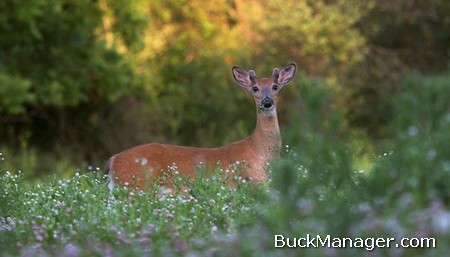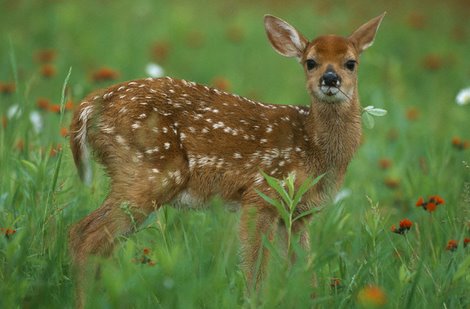A Look at Deer Nutrition
Rainfall (received or not received) during the first half of the year dictates deer hunting season. Although the rains dried up recently, many areas received good amounts of rain throughout the late-winter and early-spring. This will generally improve deer nutrition. However, it’s almost summer and more often than not it’s dry. Strong spring rains equate to better than average body condition in all deer and enhanced antler growth in bucks.
Summer rains are an appreciated bonus and can provide stable nutrition for whitetail deer herds during what is often a hot and dry stress period. The best way to manage for disappearing forage is through supplemental feeding. Thanks in a large part to the rain received this spring, in addition to the abundance of high protein forbs it produced, many deer managers reported sharp declines in protein consumption by deer. This is good for the pocket books and good for the deer, too.

“Supplement” to Improve Deer Nutrition
When it comes to quality, nothing competes with the nutrition offered by high quality forbs and new-growth browse. Forbs are weeds and wildflowers. Browse is the leaves, stems and twigs of woody plants. These foods are the best of the best, often packing high protein levels that make pelleted feeds look weak in comparison. Currently, good habitat conditions exists around the state. However, I have a feeling that things get really dry all over again. Now is the time when the “supplemental” part of supplemental feeding comes into play.
Dietary supplements for deer compliment foods naturally available. This helps improve deer nutrition during stress periods. Do not use supplements to provide everything a whitetail needs. Otherwise, that’s called complete feeding. If this is the case, it’s time to reduce the deer population.
Looking at Nutritional Stress
Does start dropping fawns in late-May over much of the whitetail’s range. However, most of the fawns drop during the month of June in Texas. Supplemental forage, which includes pelleted protein, whole cottonseed, roasted soybeans and food plots (irrigated or otherwise), help compliment deer nutritional requirements during the summer. Many provide supplements to deer to increase antler growth. Hunters like big bucks. More importantly, scientific data says supplemental feeding elevates deer productivity and survival, which increases the density of the deer population.
Healthy deer results in an increase in deer density (after fawns are born). This can be correctly diagnosed through deer surveys performed during the late- summer, then properly treated through harvest during the deer hunting season. However, from a nutritional standpoint, early-May is a long way from the fall. Fall is the next boom of natural foods, but deer nutrition can wane during the summer, especially in Texas.

Summer, like winter, is a tough time of the year for deer. It’s important to keep in mind because the the most expensive nutritional part of a doe’s annual cycle is in raising fawns. Mother Nature has already provided for all of her needs to date, but it’s going to get worse before it gets better. A lactating doe that is on a high plane of nutrition can be expected to raise more or at least more healthy fawns. With temperatures heating up and fawns about to drop, this is also the time of year when doe greatly benefit from supplementation.
Rainfall Provides Nutrition
A wet spring season means a strong start to the year for deer. Good spring rains provided a bounty of foods for native wildlife and domestic livestock. Even without another drop of rain (hope not) until the fall, habitat looks better for deer than they did in 2011. Deer in many areas improved in body condition through the fall and winter thanks to heavy acorn crops, mild temperatures and good rains. However, it did make for tough hunting.
READ: Management to Improve Deer Nutrition
If the trend of favorable environmental conditions continues through the spring, then I suspect hunters experience a really good deer hunting season. Let’s hope we catch a few rains throughout the summer to help get these deer through to the other side. Manage livestock grazing to preserve fawning habitat and to bank valuable deer browse into the summer. Again, it’s been a good year to date, which is good for antler growth and fawn production. That’s all good for hunters!